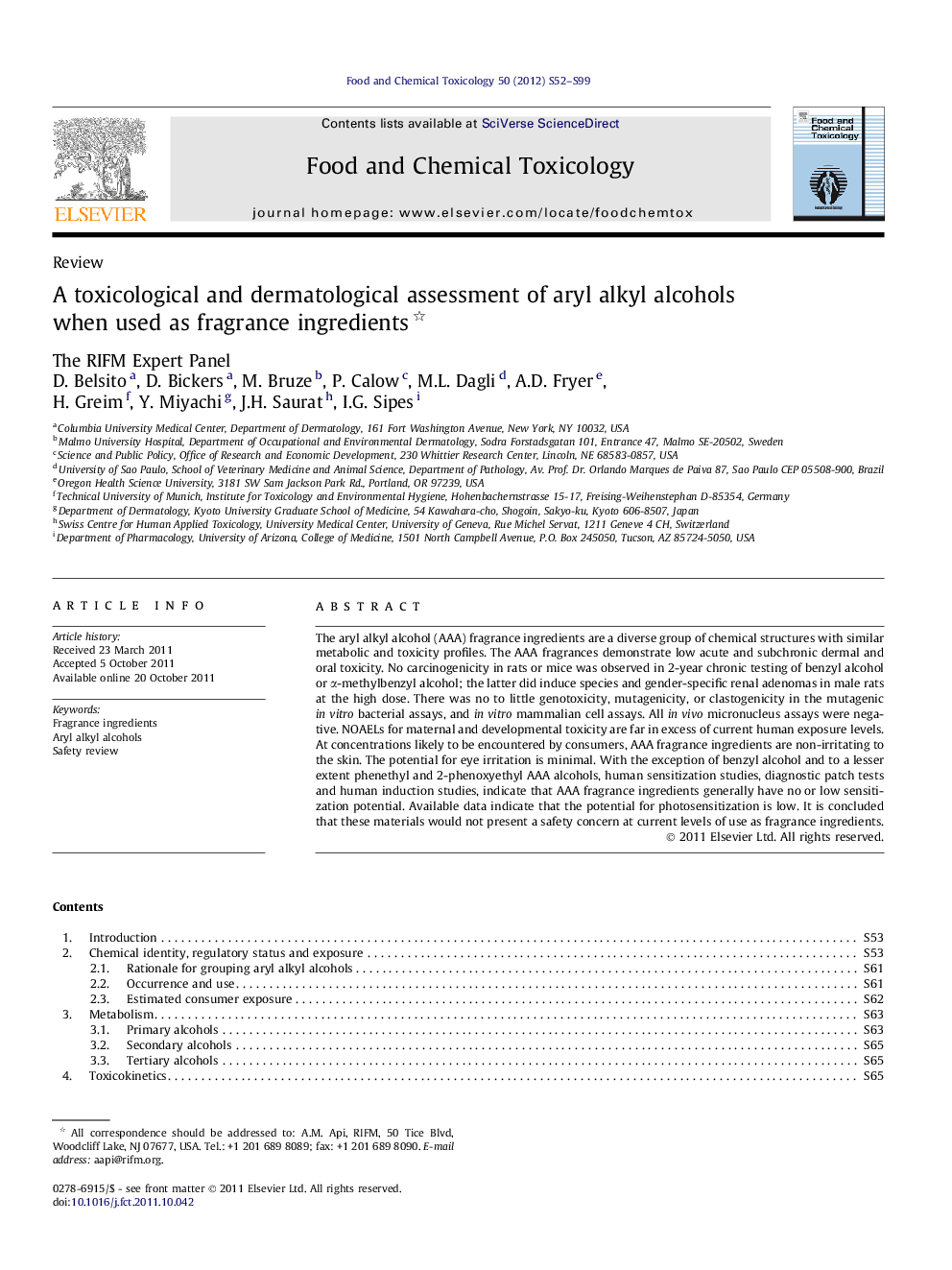| Article ID | Journal | Published Year | Pages | File Type |
|---|---|---|---|---|
| 2585290 | Food and Chemical Toxicology | 2012 | 48 Pages |
The aryl alkyl alcohol (AAA) fragrance ingredients are a diverse group of chemical structures with similar metabolic and toxicity profiles. The AAA fragrances demonstrate low acute and subchronic dermal and oral toxicity. No carcinogenicity in rats or mice was observed in 2-year chronic testing of benzyl alcohol or α-methylbenzyl alcohol; the latter did induce species and gender-specific renal adenomas in male rats at the high dose. There was no to little genotoxicity, mutagenicity, or clastogenicity in the mutagenic in vitro bacterial assays, and in vitro mammalian cell assays. All in vivo micronucleus assays were negative. NOAELs for maternal and developmental toxicity are far in excess of current human exposure levels. At concentrations likely to be encountered by consumers, AAA fragrance ingredients are non-irritating to the skin. The potential for eye irritation is minimal. With the exception of benzyl alcohol and to a lesser extent phenethyl and 2-phenoxyethyl AAA alcohols, human sensitization studies, diagnostic patch tests and human induction studies, indicate that AAA fragrance ingredients generally have no or low sensitization potential. Available data indicate that the potential for photosensitization is low. It is concluded that these materials would not present a safety concern at current levels of use as fragrance ingredients.
► Repeat-dose subchronic testing did not demonstrate adverse effects. ► No carcinogenicity was observed in a 2-year study on two materials ► There was no to little genotoxicity, mutagenicity, or clastogenicity observed ► NOAELs for maternal and developmental toxicity are excess of human exposure levels ► Aryl alkyl alcohol fragrance materials have no or low sensitization potential.
